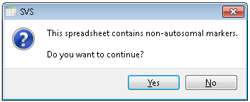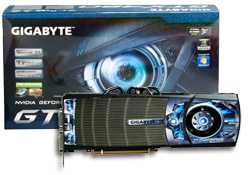Over the last decade, DNA sequencing has made vast technological improvements. With the cost of sequencing decreasing significantly, sequencing technology has become a product for the masses. The sequencing technology and programs that were once used exclusively by major research institutions are now becoming available in many research facilities around the globe. These tools produce large amounts of data sets… Read more »
You probably haven’t spent much time thinking about how we represent genes in a genomic reference sequence context. And by genes, I really mean transcripts since genes are just a collection of transcripts that produce the same product. But in fact, there is more complexity here than you ever really wanted to know about. Andrew Jesaitis covered some of this… Read more »
For the SVS 8.2 release we decided to improve upon the existing ROH feature. The improvements include new parameters to define a run and a new clustering algorithm to aide in finding more stringent clusters of runs. The improvements were motivated by customer comments and a recent research paper by Zhang 2013, “cgaTOH: Extended Approach for Identifying Tracts of Homozygosity,”… Read more »
“Who has ever had a bad experience with a VCF file?” I like to ask that question to the audience when I present data analysis workshops for Golden Helix. The question invariably draws laughter as many people raise their hands in the affirmative. It seems that just about everybody who has ever worked VCF files has encountered some sort of… Read more »
I recently gave a webcast on GWAS in a model organism: Arabidopsis thaliana; a question was brought up about the differences between EMMA and EMMAX and why the results with each would differ.
In a recent blog post (Comparing BEAGLE, IMPUTE2, and Minimac Imputation Methods for Accuracy, Computation Time, and Memory Usage), Autumn Laughbaum compared three imputation programs. Data can be exported from, or imported into, SVS in the standard file formats for these and other imputation programs. The goal of this blog post will be to review the different tools available to… Read more »
Last week, we presented a webcast on Workflow Automation in SVS. If you were unable to attend, a recording of it is on our website: http://www.goldenhelix.com/Events/recordings/making-ngs-data-analysis-clinically-practical/index.html In this post I’ll respond to some of the questions we were unable to answer within the allotted time. Will you provide a link for the software used in the webcast? I used Golden… Read more »
Last month I was inspired to create a new way to keep our customers apprised of the latest information on Golden Helix software without cluttering inboxes and overwhelming our blog. I happened to receive a link to an article for one of Illumina’s bulletins and realized that was exactly what we needed at Golden Helix as well! On Wednesday, we… Read more »
SVS 7.6.7 features new tools for filtering sequencing data based on functional predictions and allele frequencies. To complement these new features, new annotations tracks have been uploaded to our data server and are now available for our customers! Below you will find descriptions of the new tools and the related annotations track(s).
As Product Quality Manager, I have been spending quite a bit of time lately thinking about the best way to communicate with our Golden Helix customers with regards to product quality and customer support issues. Most of our customers at this point have already seen several emails from me this year! Email is certainly one way to get an announcement… Read more »
Recently several customers have asked how SNP & Variation Suite (SVS) treats gender when calculating genotype statistics. In this blog post, I will cover SVS’ current capabilities, what we have available through Python scripts, and what is coming in the near future. We thank all of our customers who have inquired about these capabilities and have given us valuable feedback… Read more »
Recently we have expanded our annotation track offerings with new human variant frequency catalogs such as the 1000 Genomes Phase 1 Data. Of course, we also curate data for plant and animal genomes – some of which are currently available in our software and some of which will be available in our next release. In this blog post, I will… Read more »
A GPU can produce an enormous boost in performance for many scientific computing applications. Since we announced the availability of SNP & Variation Suite’s incorporation of GPUs to dramatically speed up copy number segmentation, we’ve received numerous inquiries on recommendations for what GPU to purchase. Unfortunately the technical terminology and choices can be a bit confusing. In this article I… Read more »
From the Customer Support Desk… At Golden Helix, we place a strong emphasis on customer support and helping our customers use the software to the best of their abilities to answer any research questions they have. Due to such a strong emphasis on customer and technical support, there are numerous sources of help available. These include the low tech option… Read more »



